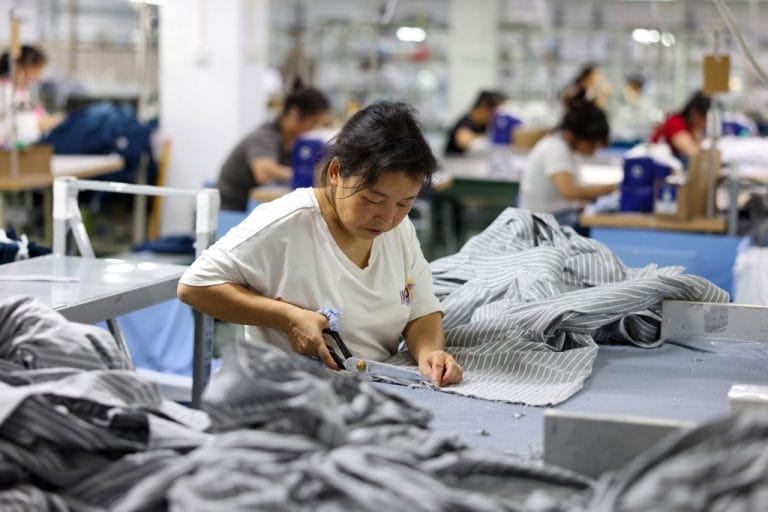🎧 Listen to This Article
China posted a mixed economic picture in May 2025, as retail sales rose 6.4% year-on-year, buoyed by domestic promotions and postponed exports, while manufacturing output and exports slowed under the strain of U.S. tariffs. The diverging trends underscore how global trade dynamics are reshaping internal consumption and industrial activity in the world’s second-largest economy.
1. Retail Sales Boom as Goods Stay Home
With many export shipments halted or delayed due to elevated U.S. tariffs, domestic consumers benefited from heavily discounted inventory, especially during the “618” e-commerce shopping festival led by JD.com.
China also expanded its subsidy programs for household appliance trade-ins, autos, and other consumer goods, further boosting sales. As a result:
- Retail sales grew 6.4% YoY in May
- January–May retail sales up 5% YoY
Still, consumer confidence remains fragile, primarily due to the sluggish property sector, which continues to drag on household wealth sentiment.
2. Factory Output Growth Slows Sharply
Despite a strong start to the year, industrial production lost momentum:
- May manufacturing output rose 5.8%, down from 6.1% in April and 7.7% in March
- Exports to the U.S. plummeted 35% YoY in May
- Overall export growth slowed to 4.8%, well below April’s 8.1%
U.S. tariffs—many of which took effect during this period—are having a measurable impact on factory activity, even as both sides negotiate toward a possible August 10 trade agreement deadline.
3. Property and Fixed Investment Under Pressure
The real estate sector continues to weigh on the broader economy:
- Property investment dropped 10.7% YoY (Jan–May)
- Consumer price index slipped 0.1% YoY in May, suggesting ongoing deflationary pressures
- Fixed asset investment rose just 3.7% YoY, signaling cautious business sentiment
Despite robust retail activity, the lack of recovery in housing and capital expenditures points to structural weaknesses in China’s post-COVID economic landscape.
4. Trade Tensions Cloud Outlook for H2 2025
With no finalized trade deal in place, the threat of additional U.S. tariffs looms, putting further pressure on exporters. Analysts from Capital Economics predict that export growth will likely slow further by year-end, especially if talks fail before the August deadline.
Expert Analysis (from our China Trade Desk):
This pattern of strong internal consumption vs. weakening industrial output marks a significant shift for China, traditionally export-driven. Retailers, multinationals, and supply chain strategists should prepare for more localized inventory pivots, while watching for deflation risks and continued policy-driven stimulus.
Companies sourcing from China may face greater volatility in pricing and delivery, as tariff-linked disruptions persist.
For further details, clarification, contributions, or any concerns regarding this article, please get in touch with us at editorial@tax.news. We value your feedback and are committed to providing accurate and timely information. Please note that our privacy policy will handle all inquiries.



